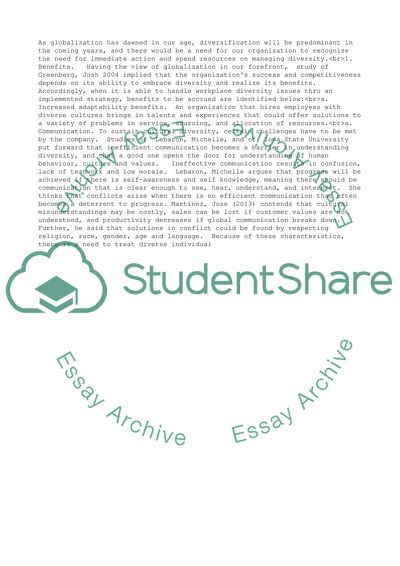Cite this document
(MAKING INTERNATIONALISATION WORK: Challenges and Recommendations for Essay - 2, n.d.)
MAKING INTERNATIONALISATION WORK: Challenges and Recommendations for Essay - 2. https://studentshare.org/human-resources/1854091-making-internationalisation-work-challenges-and-recommendations-for-cross-cultural-working
MAKING INTERNATIONALISATION WORK: Challenges and Recommendations for Essay - 2. https://studentshare.org/human-resources/1854091-making-internationalisation-work-challenges-and-recommendations-for-cross-cultural-working
(MAKING INTERNATIONALISATION WORK: Challenges and Recommendations for Essay - 2)
MAKING INTERNATIONALISATION WORK: Challenges and Recommendations for Essay - 2. https://studentshare.org/human-resources/1854091-making-internationalisation-work-challenges-and-recommendations-for-cross-cultural-working.
MAKING INTERNATIONALISATION WORK: Challenges and Recommendations for Essay - 2. https://studentshare.org/human-resources/1854091-making-internationalisation-work-challenges-and-recommendations-for-cross-cultural-working.
“MAKING INTERNATIONALISATION WORK: Challenges and Recommendations for Essay - 2”. https://studentshare.org/human-resources/1854091-making-internationalisation-work-challenges-and-recommendations-for-cross-cultural-working.


